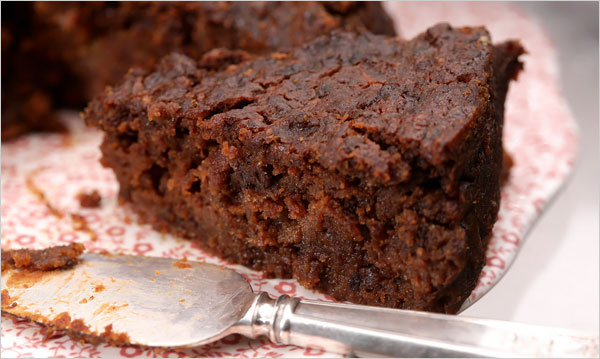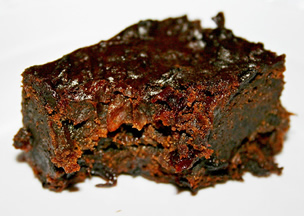 |
| Joyeuses fêtes de Noël et de Jour de l'An |
Le black cake A
l’origine le « black cake » est une adaptation caribéenne du plum
pudding anglais. Pour les immigrés des caraïbes anglophones vivant à
New York, il évoque la nostalgie de leur île Noël et la période de
Noël, car cette pâtisserie s’insère dans leur tradition de Noël.
Lors des fêtes de Noël à New York, comme un rituel, le black cake trône sur toutes les tables des caribéens d’origine anglophone. Ce fameux « black cake » est l’un des héritages de la présence britannique dans les caraïbes, et rappelle que cette présence est liée à l’exploitation de la canne à sucre, cultivée et récoltée par une main d’œuvre d’esclaves qui la transformait en sucre brun, mêlasse, rhum et vinaigre : Voir Recipe : Black cakeTime: 4 hours, plus 2 days’ macerating 1 pound prunes 1 pound dark raisins 1/2 pound golden raisins 1 pound currants 1 1/2 pounds dried cherries, or 1 pound dried cherries plus 1/2 pound glacé cherries 1/4 pound mixed candied citrus peel 2 cups dark rum; more for brushing cake 1 1/2 cups cherry brandy or Manischewitz Concord grape wine; more for grinding fruit 1/4 pound blanched almonds 1 cup white or light brown sugar for burning, or 1/4 cup dark molasses or cane syrup; more molasses for coloring batter 4 sticks (1 pound) butter; more for buttering pans 1 pound (about 2 1/2 cups) light or dark brown sugar 10 eggs Zest of 2 limes 2 teaspoons vanilla extract 1/2 teaspoon Angostura bitters 4 cups (1 pound) all-purpose flour 4 teaspoons baking powder 2 teaspoons cinnamon. 1. At least 2 days before baking, combine prunes, raisins, currants, cherries, candied peel, rum and brandy in a glass jar or sturdy plastic container. Cover tightly; shake or stir occasionally.  2.
When ready to bake, put soaked fruit and almonds in a blender or food
processor; work in batches that the machine can handle. Grind to a
rough paste, leaving some chunks of fruit intact. Add a little brandy
or wine if needed to loosen mixture in the machine.
3. If burning sugar, place a deep, heavy-bottomed pot over high heat. Add 1 cup white or light brown sugar, and melt, stirring with a wooden spoon. Stir, letting sugar darken. (It will smoke.) When sugar is almost black, stir in 1/4 cup boiling water. (It will splatter.) Turn off heat. 4. Heat oven to 250 degrees. Butter three 9-inch or four 8-inch cake pans; line bottoms with a double layer of parchment or wax paper. 5. In a mixer, cream butter and 1 pound light or dark brown sugar until smooth and fluffy. Mix in eggs one at a time, then lime zest, vanilla and bitters. Transfer mixture to a very large bowl. In a separate bowl, combine flour, baking powder and cinnamon. Fold dry ingredients into butter mixture. Stir in fruit paste and 1/4 cup burnt sugar or molasses. Batter should be a medium-dark brown; if too light, add a tablespoon or two of burnt sugar or molasses. 6. Divide among prepared pans; cakes will not rise much, so fill pans almost to top. Bake 1 hour, and reduce heat to 225 degrees; bake 2 to 3 hours longer, until a tester inserted in center comes out clean. Remove to a rack. 7. While cakes are hot, brush tops with rum and let soak in. Repeat while cakes cool; they will absorb about 4 tablespoons total. When cakes are completely cool, they can be turned out and served. To keep longer, wrap cakes tightly in wax or parchment paper, then in foil. Store in a cool, dry place for up to 1 month. Yield: 3 or 4 cakes, about 4 dozen servings |
Retour Sommaire Noël 2007 |
